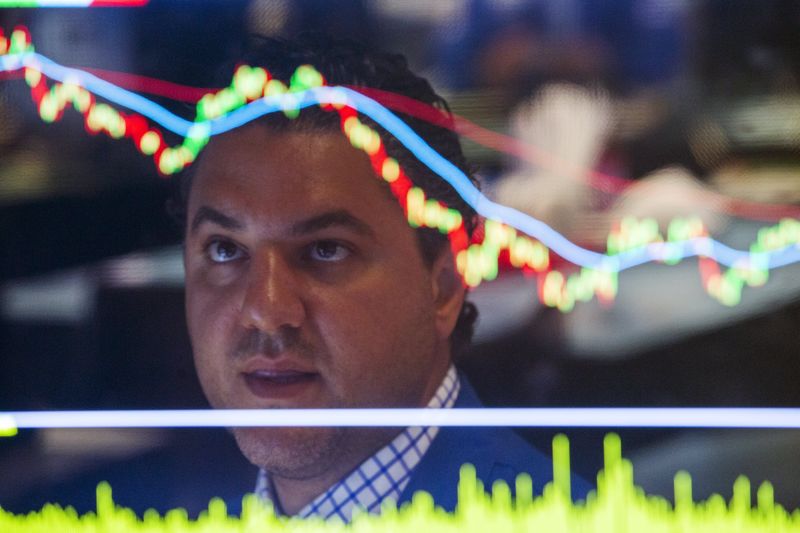By Saikat Chatterjee
LONDON (Reuters) - A rush to sell global bonds in the past week has now rippled into the world of exchange-traded funds with some of the most actively traded seeing the most bulging gaps relative to the value of underlying holdings in years.
Exchange-traded funds offer liquidity in different asset classes and have become in recent years a one-stop shop for investors and traders to access different markets and get trading liquidity in previous illiquid parts of the market.
Thanks to years of low interest rates and placid market volatility, assets held by exchange-traded funds have doubled in size in less than four years, crossing the $6 trillion mark at the end of 2019, according to fund tracker ETFGI.
More impressively, bond ETFs which were hardly present a couple of decades earlier, now make up more than a sixth of the overall market, according to industry watchers.
But the violent swings in bond markets in recent weeks has taken a toll on some of these widely traded ETFS, with their market prices diverging sharply from the value of their underlying market holdings as ETF providers struggle to transact individual bonds.
With liquidity drying up across the board, funds trying to offload any sizeable holdings are having to sell at lower prices than quoted on trading platforms, market players said.
"There is massive selling pressure on bond ETFs and funds – when you provide NAV on an over-the-counter product with very little bids similar to what you are currently seeing in the bond market, it becomes a stampede to get out," said a portfolio manager at a European fund in Hong Kong.
Take Vanguard's total bond market index fund (O:BND), for example, which tracks the performance of a broad, market-weighted bond index and launched in April 2007 with a market capitalization of more than $50 billion.
The gap between its net asset value or the price at which it values its holdings and the market price has widened to levels not seen since the 2008 global financial crisis.
George Saravelos, a strategist at Deutsche Bank (DE:DBKGn) in London, said the Barclays (LON:BARC) U.S. aggregate bond ETF is on track to post its second worst weekly performance on record, indicative of the ongoing liquidity concerns in the bond market.
A Reuters analysis of some of the biggest bond ETFs in the European market found an average gap of 2%-11% for some of the biggest names in the bond market, with the ishares core European government bond ETF (DE:EUNH) and BNP Paribas's euro aggregate treasury bond fund seeing some of the widest gaps.
By dint of its methodology, ETF providers aim to provide market liquidity by allowing market makers to create and redeem baskets of securities aimed at replicating the value of the ETF.
While these securities can be easily traded during normal markets, in times of market stress, that liquidity creation and redemption mechanism can come under pressure as traders scramble to find securities.
Some analysts say ETFs can aggravate market selloffs as they will try to minimize the gap between their net asset values and market prices.
"ETFs are the compounding factor in this crisis as, given the redemption-creation mechanism of these ETFs, they can compound selling pressure in a falling market," said Alberto Gallo, head of macro strategies at London-based hedge fund Algebris Capital.
